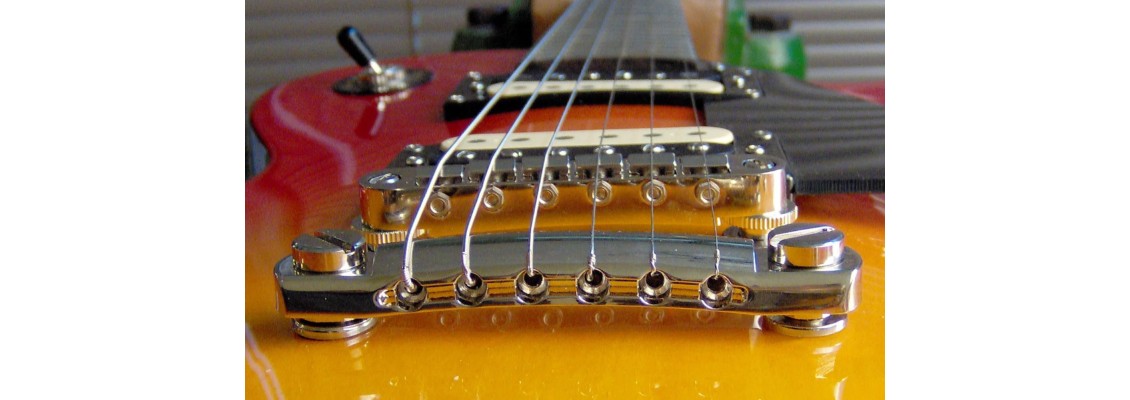
The Different Types of Guitar Bridges: Which One is Right for You?
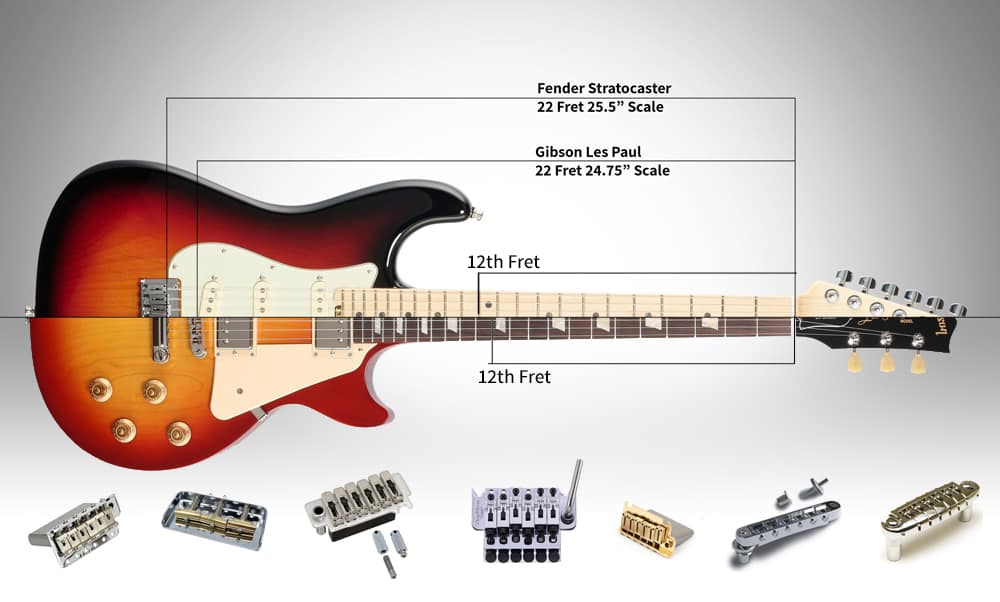
Ah, the guitar bridge. That small but mighty piece of hardware that holds the strings in place and transfers the vibrations of the strings to the body of the guitar. It may seem like a simple component, but the type of bridge you choose can have a significant impact on your playing experience and the sound of your instrument. In this article, we'll explore the different types of guitar bridges and help you figure out which one is right for you.
Fixed Bridge
The fixed bridge, also known as a hardtail bridge, is the simplest and most common type of guitar bridge. As the name suggests, it is fixed in place and does not move. The strings are anchored to the bridge, and the intonation and action (string height) are adjusted using screws on the bridge or the saddles.
Fixed bridges are easy to maintain and provide excellent tuning stability. They also tend to have a brighter, more focused tone than other types of bridges. However, they don't allow for much variation in pitch or expression, which can be limiting for some players.
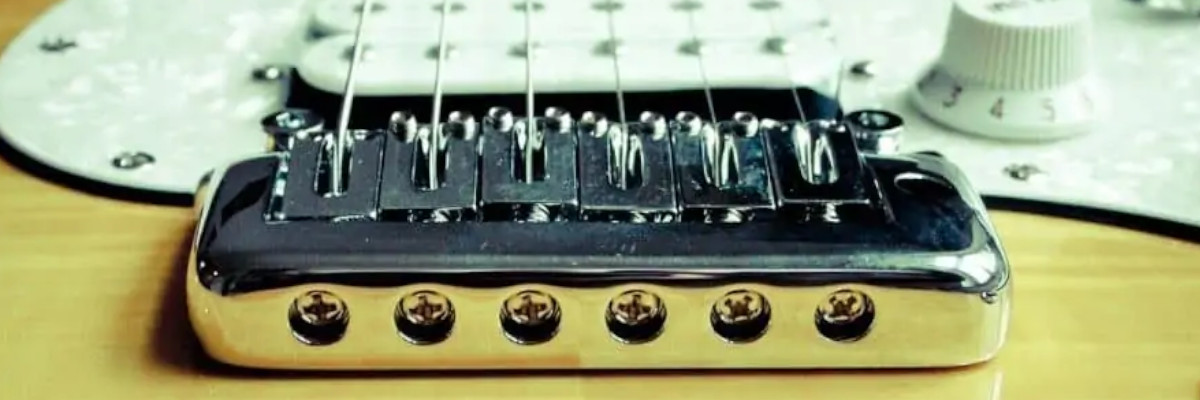
Solid. Reliable.
Tremolo Bridge
The tremolo bridge (also known as a vibrato bridge) allows for variations in pitch by allowing the bridge to move up and down. This creates the characteristic "wobble" sound associated with tremolo use.
Tremolo bridges come in two types: synchronized and non-synchronized. Synchronized tremolos, such as the Fender Stratocaster tremolo, keep the bridge and strings in tune with each other during use, while non-synchronized tremolos, such as the Bigsby, do not.
Tremolo bridges are great for players who want to add expression and variation to their playing. However, they can be more difficult to maintain and may require more frequent tuning adjustments than fixed bridges.
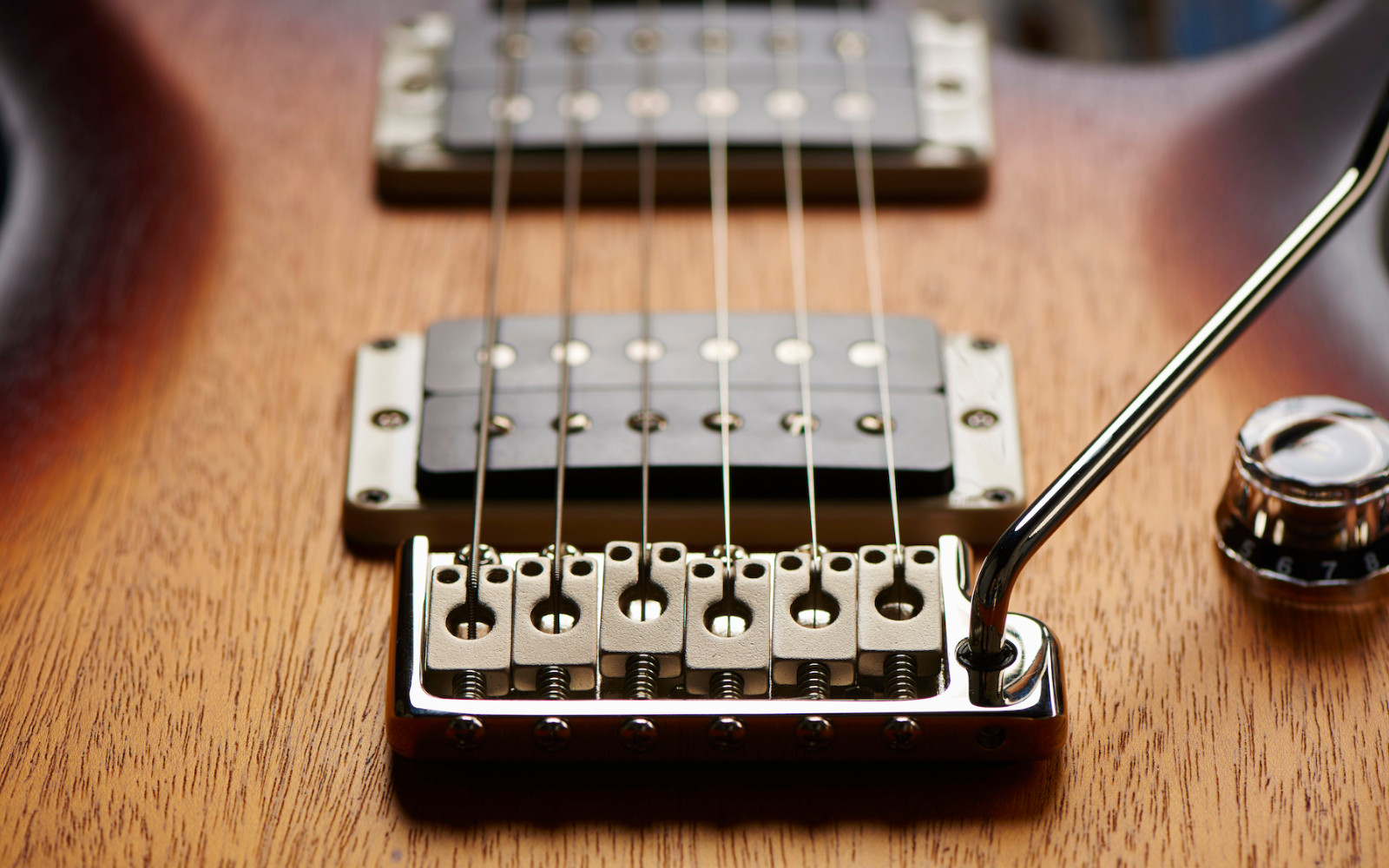
With handy tremolo arm to take full advantage of sonic possibilities
Tune-O-Matic Bridge
The Tune-O-Matic bridge is a type of fixed bridge commonly used on electric guitars. It was first introduced by Gibson in the late 1950s and has since become a popular choice for guitarists of all genres.
The Tune-O-Matic bridge consists of two main components: the bridge itself and the tailpiece. The bridge sits on two posts that are screwed into the guitar body, and the strings are threaded through individual saddles that rest on the bridge. The tailpiece anchors the other end of the strings and provides tension to maintain proper string height and intonation. One of the key features of the Tune-O-Matic bridge is its adjustable saddle design. Each individual saddle can be adjusted for height and intonation, allowing for precise tuning and improved playability. The bridge also provides excellent sustain and resonance, which are essential for achieving a rich, full-bodied tone.
Another advantage of the Tune-O-Matic bridge is its simplicity and ease of use. It requires minimal maintenance and is easy to install, making it a popular choice for guitar builders and players alike.
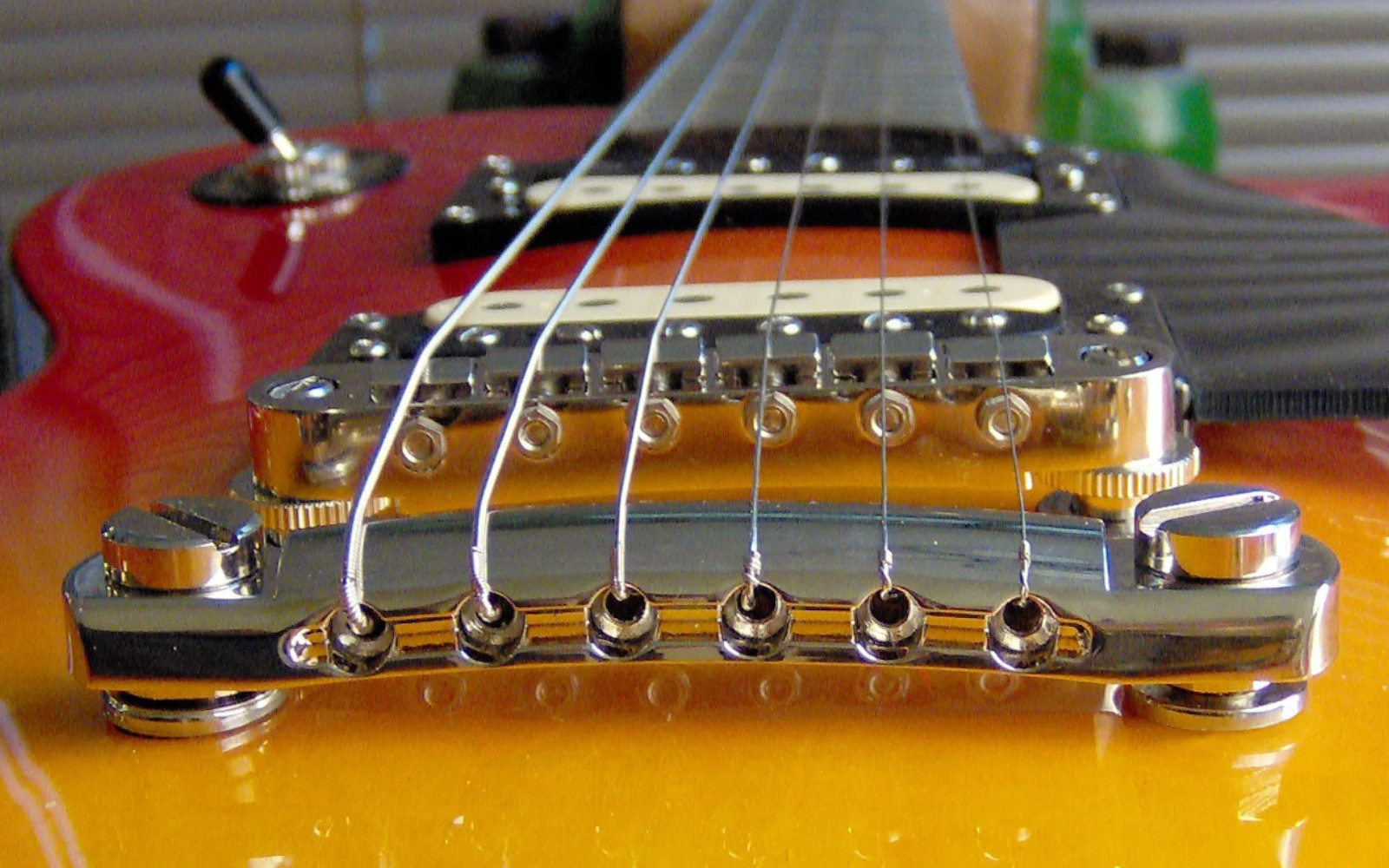
Simple, Classic, Perfect some might say.
Floyd Rose Bridge
The Floyd Rose bridge is a type of locking tremolo system that is commonly used on electric guitars, particularly in heavy metal and hard rock genres. It was first introduced in the late 1970s by Floyd Rose, a guitarist and inventor, and has since become a popular choice for guitarists seeking greater tuning stability and the ability to perform dive bombs and other dramatic pitch bends.
The Floyd Rose bridge consists of several key components, including a locking nut, a bridge plate, and individual saddles for each string. The locking nut sits behind the guitar's nut and locks the strings in place, preventing them from slipping out of tune during aggressive playing. The bridge plate is mounted on two knife-edge pivot points, allowing for smooth and precise movement when using the tremolo arm.
One of the defining features of the Floyd Rose bridge is its double-locking design. In addition to the locking nut, each string saddle is also locked in place, ensuring that the strings remain stable and in tune even during extreme whammy bar usage. This level of stability makes the Floyd Rose bridge a popular choice for guitarists who want to perform wild pitch bends and other effects without compromising their tuning.
Another advantage of the Floyd Rose bridge is its ability to float, meaning that it can be raised or lowered to adjust the tension on the strings. This allows for a wide range of pitch bending and vibrato effects, making it a popular choice for guitarists seeking a more expressive playing style.
While the Floyd Rose bridge can take some getting used to, particularly in terms of tuning and maintenance, it offers unparalleled tuning stability and a wide range of creative possibilities for adventurous guitarists.
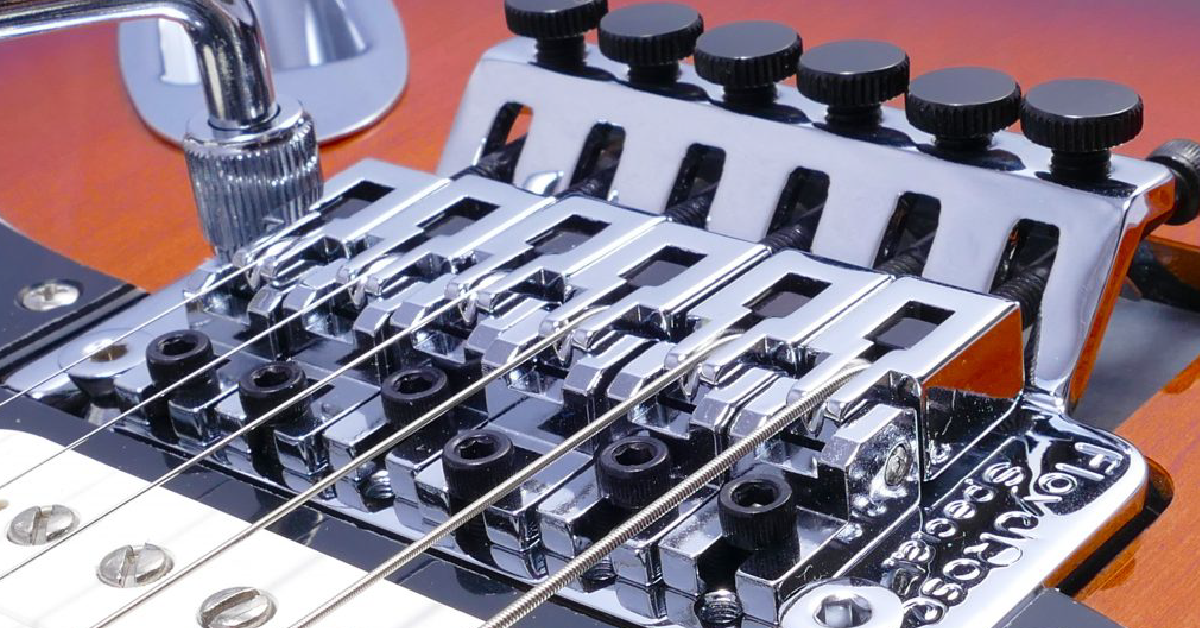
It's a beast.
Wraparound Bridge
A wraparound bridge is a type of fixed bridge commonly found on electric guitars. As its name suggests, the strings on a wraparound bridge wrap around the bridge and anchor at the back of the guitar's body.
The wraparound bridge typically consists of a single piece of metal or plastic that spans the distance between the guitar's two mounting posts. The strings are threaded through the bridge and wrap around the back of the bridge before being anchored to the guitar's tailpiece. This design allows for a simple and effective means of anchoring the strings and maintaining proper string tension.
One of the main advantages of a wraparound bridge is its simplicity and ease of use. Unlike more complex bridge designs, such as those found on tremolo-equipped guitars, a wraparound bridge requires minimal setup and adjustment. It is also relatively easy to change strings and perform maintenance, making it a popular choice for guitarists who prefer a low-maintenance instrument.
In terms of sound, a wraparound bridge is known for producing a warm and full-bodied tone with good sustain. However, since the bridge is fixed in place, there is no way to adjust the intonation or string height on individual strings, which can limit the tonal options available to the guitarist.
Overall, a wraparound bridge is a reliable and low-maintenance option for guitarists seeking a simple and effective means of anchoring their strings. While it may not offer the same level of tonal versatility as other bridge designs, it is a popular choice for players who value simplicity and ease of use.
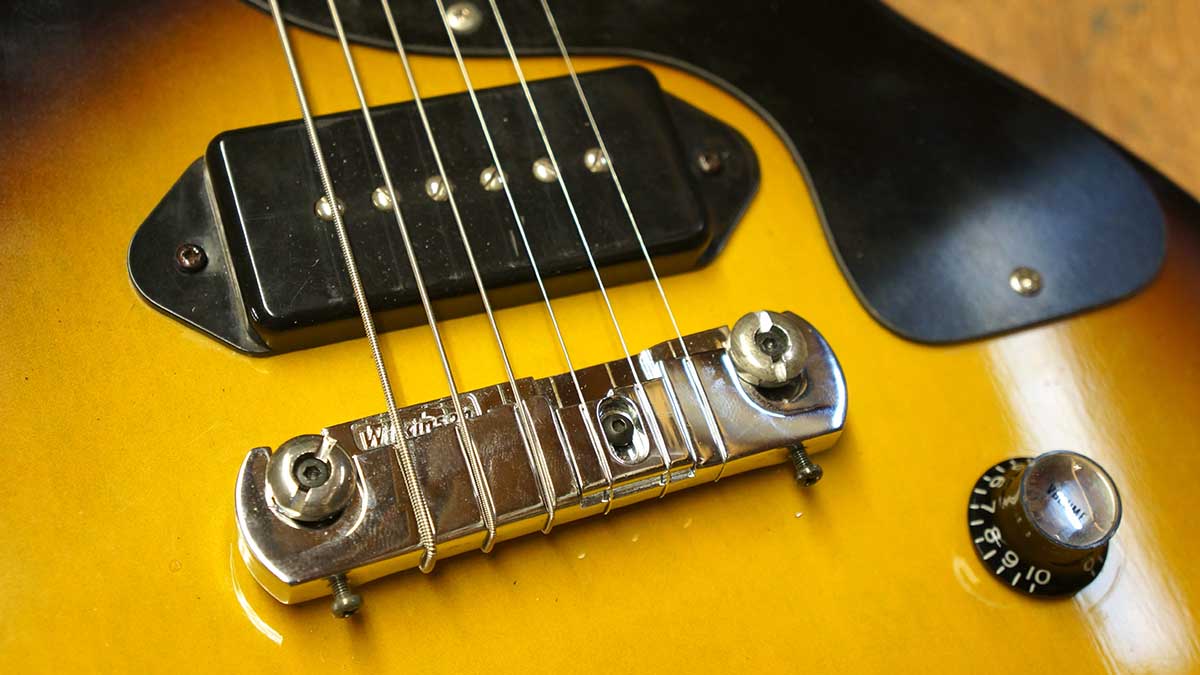
Wrap your head around that....
So, which type of bridge is right for you? It depends on your playing style and preferences. If you value simplicity and tuning stability, a fixed bridge may be the way to go. If you want to add expression and variation to your playing, a tremolo bridge might be the better choice. And if you're into heavy use and extreme techniques, a Floyd Rose bridge may be the way to go.
No matter which type of bridge you choose, make sure to take the time to set it up correctly and maintain it regularly. A poorly set-up bridge can lead to tuning issues, poor intonation, and a less-than-ideal playing experience. Consult a professional guitar technician if you're not confident in setting up your bridge yourself.
So, the guitar bridge may be a small component of the instrument, but it plays a big role in the sound and playing experience of your guitar. Consider your playing style and preferences when choosing a bridge, and don't be afraid to experiment with different types to find the perfect fit for you. A well-chosen and well-maintained guitar bridge can make all the difference in your playing enjoyment and musical expression.




